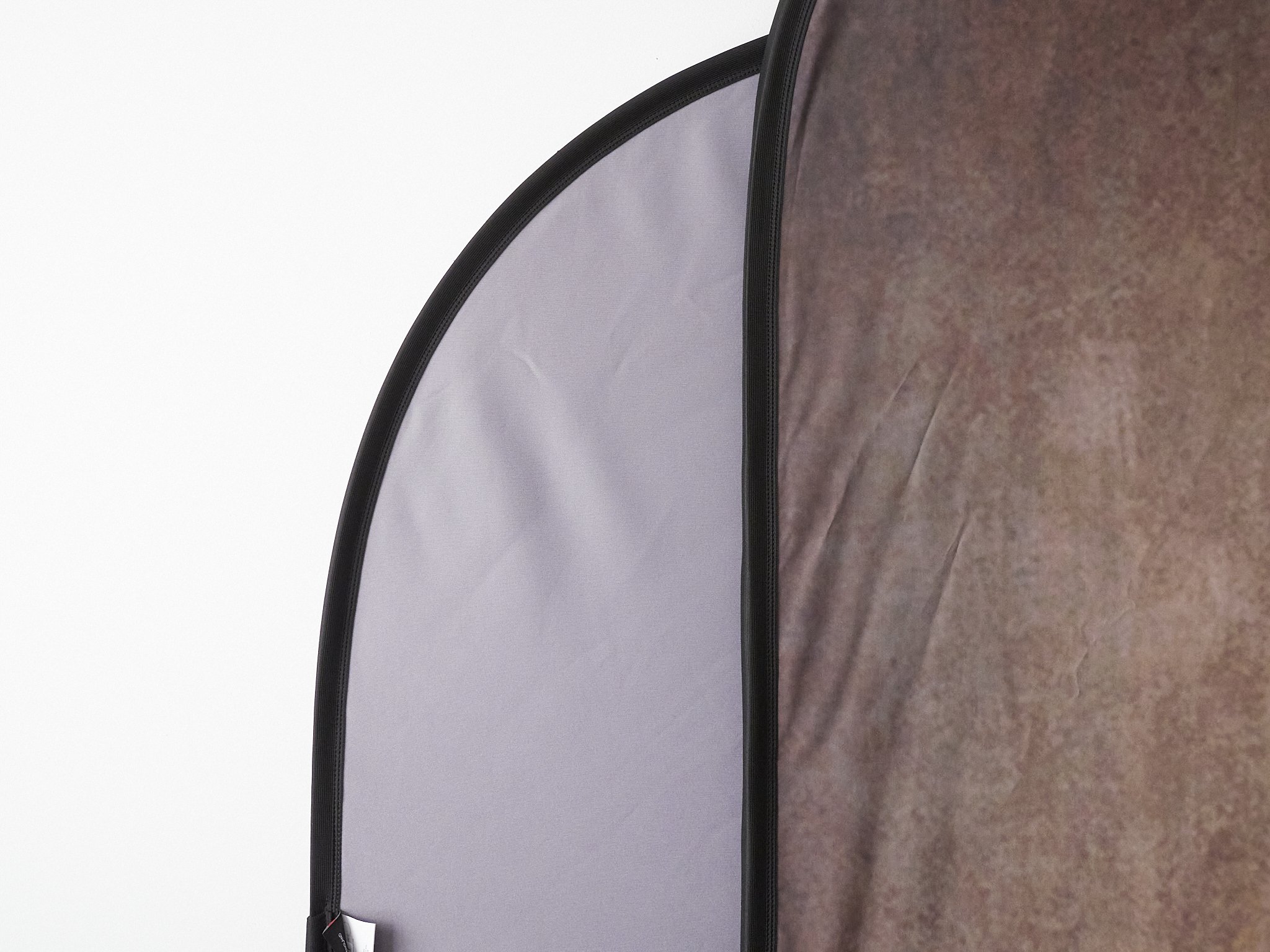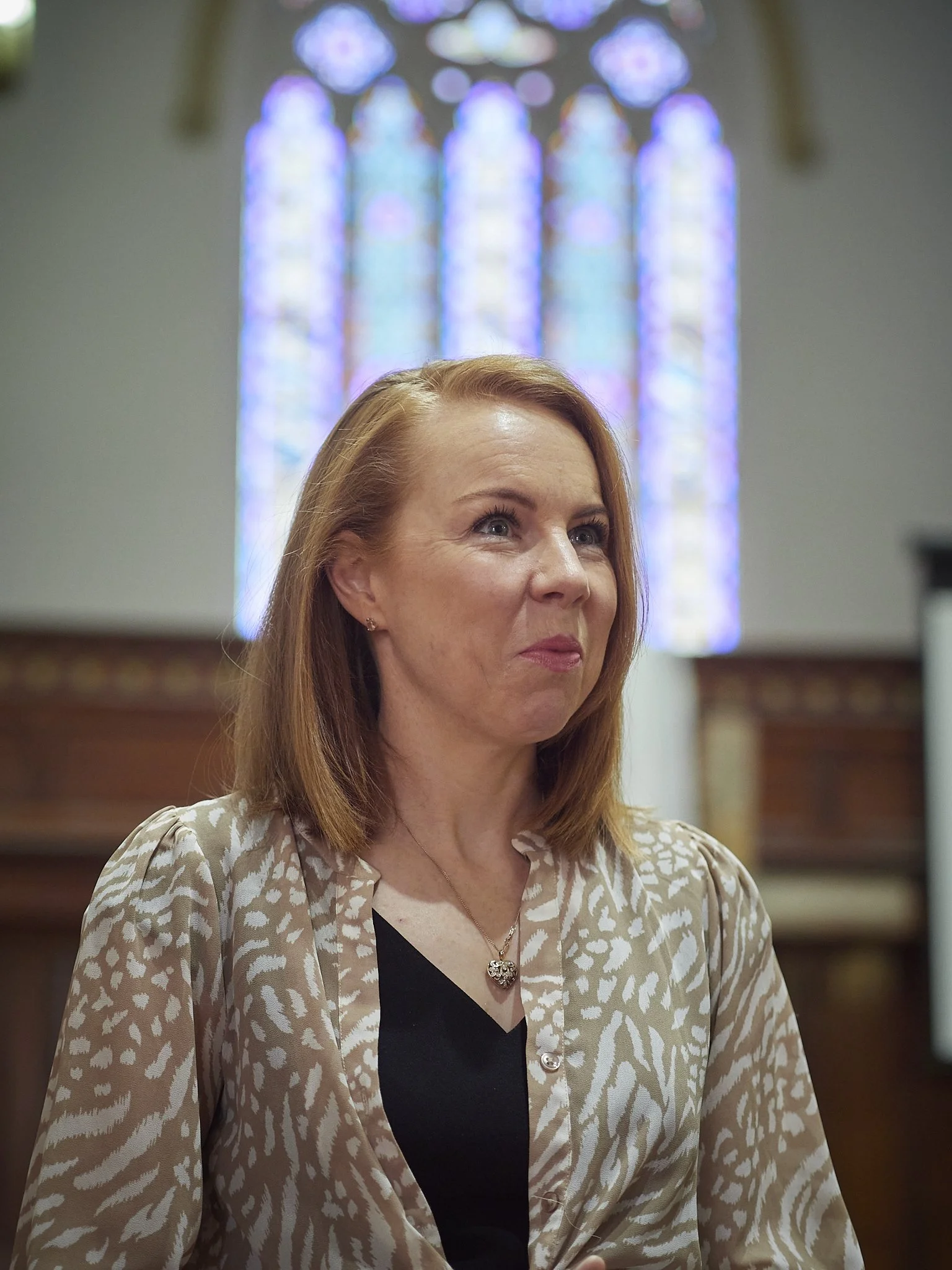I ordered a second Lastolite backdrop, one that had been calling to me for a while, the Pewter and Walnut.
I chose this because the Pewter adds a slightly textured grey with a darker base, which appeals (it’s where I tend to take my processing) and the Walnut looked to be the most realistic looking of the antique textures. The Tobacco and Olive seems to be the favourite around the traps, but I do not like either for my style. I dislike either of the overly mottled and “brush stroke” looks. What I was after was the look of an old wall or worn piece of cloth rather than the deliberately textured look of the others.
First up, these are beautifully made. Unlike the cheaper collapsibles I have, there is no sign of ware points or even the potential for them (one of the bigger Neewer Black/Whites I bought for peanuts by comparison, came dirty on the white side and already had a small tare point forming, so galaxies apart). The metal is strong, but seems smooth edged and the seams are very well done. More industrial than hobby grade.
I have been tempted by the Kate version of these, but I and others have been stung a few times by their colour and texture accuracy as well as build and considering they are still 2/3rds the price, it does not seem a good gamble. The Kate’s are also rounder, which is limiting.
Compared to my Black/Grey the textured ones are all a little smaller and lighter, which is a plus. The B/G is a monster coming in at 1.8m on the short side and the difference is clear below. The two are laying on their sides and you can see a clear width difference.
For comparison, I painted my studio walls ceiling white.
The warm grey of the B/G is versatile and useful, but I really prefer a lightly textured near black.
Standing up you can see the subtle vignette on the Pewter starting to show. Note the wrinkles.
My standard processing from the grey is vignetted and dark, so the Pewter should give me more processing latitude without effecting the subject and the “perfect” smoothness will go.
The Walnut is a bit less appealing on first opening. I expected this to have been in storage for a while, because the business selling it has had this one on special by $50 and in stock since before I bought my first. I like this combo, but it seems to be less liked generally, so slower selling I guess. Flash will likely remove these wrinkles to some extent as it does with my Grey, but I would like them to at least drop away by half.
Wrinkles aside (ugh!), the texture is quite soft up close. This is normal and expected, but this thing is not cheap. I am hoping the images I take look similar to examples I have seen and the wrinkles drop out with a few days standing open. If not I will probaly have to steam them out with the iron and hanging it will help also.
Now, to be fair I have poor light in that room at this time of day, it was ery directional and I only just opened it out. After taking a shot, it looks closer to the samples I have seen than to the naked eye. Even while writing this and looking at the quick snap above, I am settling with it better.
The texture is nice and the vignette handy. The Rory Lewis video on this one is unfortunately not my favourite subject or look, so I have to make this my own.
I am happy overall with this purchase.
It adds options and back-up, especially to my portable set-up and when the wrinkles go, I will be able to manipulate the three levels of texture to the colours and hues I need.
Being smaller also makes a difference. the weight difference is noticeable (helps me grab the right otherwise identical bag) and I should be able to hang it on a smaller stand sideways like the Neewer 220cm, so I will not need the much bigger 260’s or my C-Stand). The 1.8x2.1 is so big, that even hung sideways it is too tall for my shorter stands.
Options as they stand;
Large Black/White, Black/Grey, Textured Pewter/Walnut (collapsible).
Medium sized 1x1.5m Black/White (collapsible).
Small circualr 1m Black/White (collapsible).
Huge 12x20’ Black and 12x20’ Chroma Green cloth (need a cross bar).
Medium 6x9’ Grey and 5x7’ textured Grey cloth (need a cross bar).
4 colours of mildly textured soft vinyl in rolls .8 x 2-3m long (need a cross bar).











































































































































